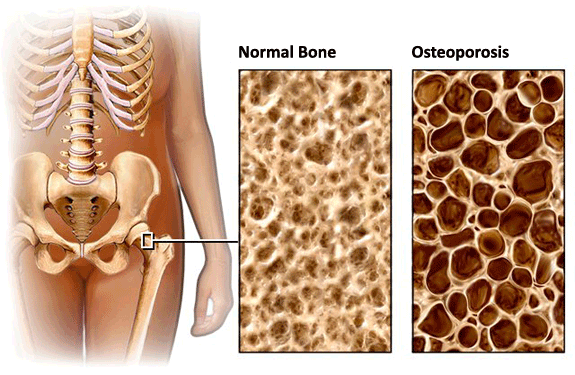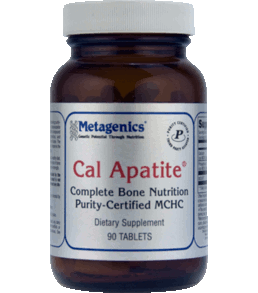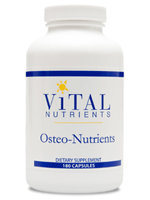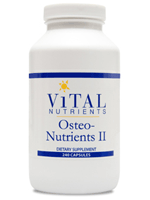
Article Contents:
Osteoporosis Overview
Approximately 40 million people in the U.S. suffer with Osteoporosis or are at high risk of developing this disease. A full 80% of these are women. In fact, by 2020, half of all Americans, over the age of 50, are expected to have osteoporosis – stats offered by the National Osteoporosis Foundation. Approximately 25% of osteoporosis sufferers, 50 years and older, die in the year preceding a hip fracture.
What is Osteoporosis?
Osteoporosis, which means “porous bone,” is a condition in which the bones become thin and weak. Any bone in the body can be affected by osteoporosis; however, the most common bone breakages occur in the back, hip and wrist.
According to the Siteman Cancer Center, the risk of osteoporosis increases with age, with bone loss usually starting slowly around age 30. For men, bone loss tends to occur gradually over time, while women experience a period of heightened bone loss around menopause that slows down after 4-8 years.
Bone loss can continue many years without symptoms; so many will not be aware that they have it.
Top of Page
Symptoms of Osteoporosis
The Mayo Clinic lists the symptoms of osteoporosis as:
- Back pain, caused by a fractured or collapsed vertebra
- Loss of height over time
- A stooped posture
- A bone fracture that occurs much more easily than expected
They also suggest that you may want to consult with your doctor if you’ve:
- Gone through early menopause
- Experienced a loss of height
- Had a bone break more easily than expected
- Taken corticosteroids for a lengthy period of time
- Got a history of osteoporosis
There is no one strategy that will yield improvement in those with osteoporosis; rather it requires a combination of several approaches that provide nutrients and the right environment required by your body to improve. In other words, bone thinning can be dramatically slowed, using the preventative measures listed in this article, in addition to seeking necessary medical treatment. If you suspect you have osteoporosis, you will need to consult with your health care provider as soon as possible.
Top of Page
Natural Remedies to Slow Down Bone Loss
- Vitamin D
- Calcium
- Hormone Replacement Therapy (Using bioidentical hormones)
- Weight-bearing exercises
- Diet
Vitamin D
The role of vitamin D, in treating/preventing osteoporosis has been conclusively established in four randomized, placebo-controlled clinical trials at a minimum level of 800 I.U per day. Each of these trials demonstrated that this dose prevents approximately 30% of hip or non-vertebral fractures compared to placebo, in adults over 65 years of age. Intakes less than this have never been found effective.
NOTE: Vitamin D is a fat-soluble vitamin, and periodic blood testing of body levels is required.
Source
Calcium
Calcium is an essential nutrient that is involved in most metabolic processes. The calcium in the skeleton has the additional role of acting as a reserve supply of calcium to meet the body's metabolic needs in states of calcium deficiency. Calcium deficiency is easily induced because of the obligatory losses of calcium via the bowel, kidneys, and skin. Calcium deficiency causes mobilization of bone and leads sooner or later to osteoporosis.
The minimum amount of calcium needed daily is 800 mg. In post menopausal women, there is an increase in calcium excretion which expands the calcium requirement to 1,000 mg daily.
Source
Hormone Replacement Therapy (Using bioidentical hormones)
According to the National Institute of Arthritis and Musculoskeletal and Skin Diseases, “The most common manifestation of estrogen deficiency in premenopausal women is amenorrhea, the abnormal absence of menstrual periods. Missed or irregular periods can be caused by various factors, including hormonal disorders as well as extreme levels of physical activity combined with restricted calorie intake—for example, in female marathon runners, ballet dancers, and women who spend a great deal of time and energy working out at the gym.
Low estrogen levels in women after menopause and low testosterone levels in men also increase the risk of osteoporosis. Lower than normal estrogen levels in men may also play a role. Low testosterone and estrogen levels are often a cause of osteoporosis in men being treated with certain medications for prostate cancer.”
Source
NOTE: It is recommended that a hormone panel is conducted every six months by your health care practitioner to determine your estrogen, progesterone and testosterone levels. Additionally –
Should it be determined that any of your hormone levels are low, we recommend that you do NOT opt for synthetic-hormone replacement, and instead ask your practitioner for a bioidentical hormone prescription. Physiological data and clinical outcomes demonstrate that bioidentical hormones are associated with lower risks, including the risk of breast cancer and cardiovascular disease, and are more efficacious than their synthetic and animal-derived counterparts. Until evidence is found to the contrary, bioidentical hormones remain the preferred method of HRT.
Source
Weight-Bearing Exercises:
It’s never too late to start an exercise program for maintaining health bones, even if you already have osteoporosis, according to WebMD.
Although people with osteoporosis may believe that exercise increases the risk of injury from broken bones, the truth is quite the opposite. A regular, properly designed exercise program may actually help prevent the falls and fall-related fractures that so often result in disability and premature death. That's because exercise strengthens bones and muscles, and improves balance, coordination, and flexibility, which is especially important for older adults and people who have been diagnosed with osteoporosis.
According to the National Osteoporosis Foundation, the best exercises for building and maintaining bone density are:
- Weight-bearing exercise, such as walking, that makes you work against gravity while staying upright.
- Muscle-strengthening exercise, such as weight lifting, that makes you work against gravity in a standing, sitting, or prone position.
Nonimpact activities such as balance, functional, and posture exercises also may benefit people with osteoporosis. Although these exercises don't build or maintain bone density, they may increase muscle strength and decrease the risk of falls and fractures.
Source
Diet:
In an article written for our clinic patients some years ago, we spotlighted the benefits of an alkaline diet. Alkaline balance is crucial for bone health. Our enzymatic and immunologic mechanisms all function their best in an alkaline environment. Despite this, American diets today are designed to do just the opposite – promote acidic environments. Diseases, cancers and ‘it is’ of all kinds florish in acidic environments, yet find it difficult, if not impossible to in an alkaline environment.
Following is a link to the article, which can be found on our website. We highly recommend that you take the time to read it.
Regaining Your Health & the pH Connection
Top of Page
Medications Associated with Osteoporosis:
Long-term use of certain medications, including glucocorticoids and some anticonvulsants, leads to bone loss and increased risk of osteoporosis. Other drugs that may lead to bone loss include anticlotting drugs, such as heparin; drugs that suppress the immune system, such as cyclosporine; and drugs used to treat prostate cancer. If you think you have osteoporosis and are taking prescription medications for any of the following conditions, please consult with your health care practitioner about potentially safer options.
- Anticoagulants
- Anticonvulsants
- Cyclosporine A and tacrolimus
- Cancer chemotherapy drugs
- Glucocorticoids (and adrenocorticotropic hormone (ACTH)
- Gonadotropin-release hormone agonists
- Lithium
- Methotrexate
- Parenteral nutrition
- Thyroxine
Source
Top of Page
Supplement Listings
Our Top Selling
Osteoporosis Combination Formulas |
 |
Cal Apatite Bone Builder® by Metagenics
Cal Apatite is a comprehensive bone support formula featuring purity-certified, calcium-rich microcrystalline hydroxyapatite concentrate (MCHC), a complex crystalline compound composed primarily of calcium, phosphorus, delicate organic factors and protein matrix, bone-derived growth factors, and a full spectrum of trace minerals that naturally comprise healthy bone ...
Available in 90 & 270 Count.
More Information ... |
 |
Rebuild by Metabolic Maintanence
In a landmark clinical study entitled "The Role of Trace Minerals in Osteoporosis", Dr.s Saltman and Strause demonstrated that daily use of 1000 mg of Calcium-citrate/malate along with the trace minerals copper, manganese and zinc ...
Available in 180 Count.
More Information ... |
 |
Osteo-Guard by Douglas Laboratories
Osteo-Guard® Plus Ipriflavone provides a combination of nutrients to support bone health. Calcium and phosphorus are provided as microcrystalline hydroxyapatite, a whole bone extract also containing trace minerals ...
Available in 120 Count.
More Information ... |
 |
Osteo-Nutrients by Vital Nutrients
OSTEO-NUTRIENTS is a comprehensive bone support formula which contains high amounts of elemental calcium and magnesium. For people with a family history of osteoporosis, menopausal women, and elderly men and women, adequate ...
Available in 180 Count.
More Information ... |
 |
Osteo-Nutrients II by Vital Nutrients
Calcium is essential to many physiological functions such as helping to maintain and build bone mass and strength before and during menopause. Boron, which also plays a role in bone health, has been added to this formula. ...
Available in 240 Count.
More Information ... |
Top of Page
REFERENCES:
Siteman Cancer Center & Washington School of Medicine Osteoporosis Websource: http://www.yourdiseaserisk.wustl.edu
Mayo Clinic Symptoms Websource: http://www.mayoclinic.com
Departments of Nutritional Sciences, Laboratory Medicine and Pathobiology, University of Toronto, Pathology and
Laboratory Medicine, Mount Sinai Hospital, Toronto, Canada Annals of Medicine. 2005; 37: 278–285 Taylor & Francis Taylor & Francis Group The Role of Vitamin D in the Prevention of Osteoporosis Websource: http://www.direct-ms.org
Holtorf, K. Holtorf Medical Group, Inc., Torrance, CA 90505, USA. The bioidentical hormone debate: are bioidentical hormones (estradiol, estriol, and progesterone) safer or more efficacious than commonly used synthetic versions in hormone replacement therapy? Postgrad Med. 2009 Jan;121(1):73-85. Postgrad Med. 2009 Jan;121(1):73-85. Websource: http://www.ncbi.nlm.nih.gov/pubmed/19179815
B.E. Christopher Nordin, MD, FRCP, FRACP, DSC Division of Clinical Biochemistry, Institute of Medical and Veterinary Science, Adelaide, South Australia Department of Pathology, University of Adelaide, Adelaide, South Australia Calcium and Osteoporosis Accepted 19 November 1996. Websource: http://www.nutritionjrnl.com/article/S0899-9007(97)83011-0/abstract
WebMD Medical Reference Osteoporosis Health Center Osteoporosis Exercise Websource: http://www.webmd.com/osteoporosis/guide/osteoporosis-exercise
Top of Page |














